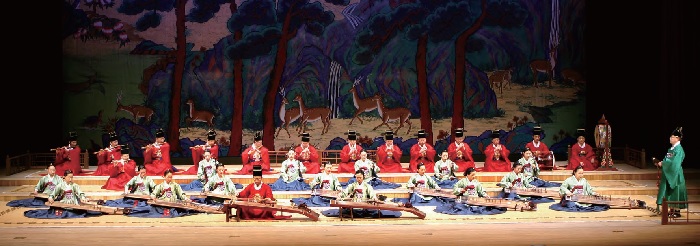The term gugak, which literally means “national music,” refers to traditional Korean music and other related art forms including songs, dances, and ceremonial movements.
The history of music in Korea should be as long as Korean history itself, but it was only in the early 15th century, during the reign of King Sejong of the Joseon dynasty (1392–1910), that Korean music became a subject of serious study and was developed into a system, resulting in the creation of the first mensural notation system called jeongganbo in Asia. King Sejong’s efforts to reform the court music led not only to the creation of Korea’s own notation system but also to the composition of special ritual music called Jongmyo Jeryeak to be performed during the royal ancestral ritual (Jongmyo Jerye) in the Jongmyo— inscribed on UNESCO’s Representative List of the Intangible Cultural Heritage of Humanity in 2001—and Yeomillak, or “Joy of the People.” The term gugak was first used by the Jangagwon, a government agency of late Joseon responsible for music, to distinguish traditional Korean music from foreign music.
Traditional Korean music is typically classified into several types: the “legitimate music” (called jeongak or jeongga) enjoyed by the royalty and aristocracy of Joseon; folk music including pansori, sanjo, and japga; jeongjae (court music and dance) performed for the King at celebratory state events; music and dance connected with shamanic and Buddhist traditions such as salpuri, seungmu, and beompae; and poetic songs beloved of the literati elite such as gagok and sijo. Of the numerous folk songs, Arirang—inscribed on UNESCO’s Representative List of the Intangible Cultural Heritage of Humanity in 2012—is particularly cherished by the common people and there exist many variations with special lyrics and melodies unique to each region such as Miryang, Jeongseon, and Jindo.
Gugak instruments are similarly diverse. These traditional musical instruments are generally divided into three categories: wind instruments such as the piri, daegeum, danso, and taepyeongso; stringed instruments such as the gayageum, geomungo, haegeum, ajaeng, and bipa; and percussion instruments such as the buk, janggu, pyeonjong, pyeongyeong, kkwaenggwari, and jing.




.png)



